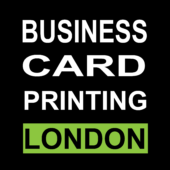A well-designed business card is a powerful networking tool that can leave a lasting impression on potential clients, colleagues, and partners. It serves as a tangible representation of your brand and contact information. Creating an effective business card involves careful consideration of design elements, contact details, and branding. In this article, we’ll guide you through the process of making a business card that stands out and effectively communicates your professional identity.
Step 1: Define Your Brand and Purpose
Before you start designing your business card, take some time to reflect on your brand and the purpose of the card. Consider the following:
- Brand Identity: What are your brand’s colors, fonts, and style? Your business card should reflect your overall branding.
- Target Audience: Who are you designing the card for? Understanding your audience can help you choose the right design and information to include.
- Purpose: Determine the primary purpose of your business card. Are you looking to make sales, build relationships, or generate leads?
Step 2: Choose a Business Card Template
There are various tools and software available for designing business cards. You can use professional graphic design software such as Adobe Illustrator or Canva, or you can find pre-designed templates online. Choose a template that aligns with your brand identity and the purpose of the card.
Step 3: Select Your Design Elements
Design elements play a key role in making your business card visually appealing and memorable. Consider the following design choices:
- Colors: Use your brand’s colors consistently across the card. Choose a color scheme that complements your logo and overall branding.
- Fonts: Choose fonts that are easy to read and match your brand’s style. Limit the number of fonts to two or three at most.
- Logo: Include your company logo prominently on the card. This helps reinforce brand recognition.
- Images and Graphics: If you choose to include images or graphics, ensure they align with your brand and enhance the overall design.
Step 4: Add Contact Information
Your business card should include essential contact information that allows people to reach you easily. Include the following:
- Name: Your full name should be clearly displayed on the card.
- Title: Include your professional title or role in the company.
- Company Name: Clearly display your company name.
- Phone Number: Include your phone number with the appropriate country and area code.
- Email Address: Provide an email address where you can be reached.
- Website: Include your website URL for additional information about your business.
- Social Media: If relevant, you can also add links to your social media profiles.
Step 5: Pay Attention to Layout and Spacing
The layout and spacing of your business card are important for a clean and professional appearance. Follow these tips:
- Balance: Balance the design elements and text evenly across the card.
- Margins: Leave enough white space around the edges to prevent the card from looking cluttered.
- Alignment: Align text and design elements consistently for a polished look.
Step 6: Review and Proofread
Before printing your business card, review the design and text carefully. Check for any typos, grammatical errors, or design inconsistencies. Make sure all contact information is accurate and up-to-date.
Step 7: Print Your Business Cards
Once you’re satisfied with your design, choose a printing option. You can print your business cards at home using high-quality cardstock or use a professional printing service for the best results. Consider different finishes, such as matte or glossy, to enhance the card’s appearance.
Conclusion
Creating a business card is an important step in establishing your professional identity and making a strong impression on potential clients and partners. By following these steps, you can design a business card that effectively represents your brand and provides essential contact information. Take the time to carefully plan your design, review the card for accuracy, and choose a high-quality printing option. A well-crafted business card can be a valuable tool in building relationships and growing your professional network.
